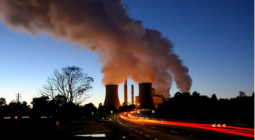Australia: ESB reform of electricity system needs to plan for a zero emissions future

IEEFA's submission to the ESB post 2025 electricity market design options
Australia has a huge opportunity to become one of the first countries to fully transition to a zero-emissions electricity system. The nation stands to benefit financially by exporting technologies and know-how developed through the transition.
The Energy Security Board (ESB) post 2025 market design process seeks to reform how the electricity system operates to integrate increasing amounts of renewable generation and distributed energy resources.
IEEFA notes there is a need for a clear end-state vision of how a zero emissions grid would operate, and a comprehensive transition plan to arrive at that vision through the most economically efficient and environmentally sustainable manner.
Regulatory and market mechanisms should enable the zero emissions grid of the future, instead of preserving legacy systems and practices.
The ESB presented reform options in April 2021. Some of these, in IEEFA’s view, would assist the transition while others are likely to hinder it.
IEEFA’s perspective is highly summarised below (see our full submission for details).
Resource Adequacy Mechanisms (RAMs)
Obtaining certainty around coal generator closure dates is key so that adequate replacement capacity can be built in advance of closures.
The most effective way to do this would be by introducing a legally enforceable framework of incentives and penalties that locks in coal closure dates and removes uncertainty and risk around early closure.
The proposed Physical Retailer Reliability Obligation (PRRO) is not an effective mechanism to ensure resource adequacy as it may delay the inevitable coal generator closures, will not provide certainty, will prevent Australia from reducing emissions, and it will increase bills for consumers.
Essential System Services (ESS)
The future National Electricity Market (NEM) should have a stable network that supports up to 100% inverter-based distributed generation assets as its foundation.
It is key that energy planners develop future scenarios for optimal NEM operation, ensure proposed near-term reforms and investments align with future scenarios, and build investor confidence by explicitly mapping out the transition from legacy to future system security.
Any options which are not aligned with the end-state vision will be unnecessary in a zero emissions future and should be avoided, such as the establishment of new non-energy markets for essential system services (ESS) that favour fossil-fuel plants.
Distributed Energy Resources (DER)
The ESB’s DER workstream should be focused on efficiently integrating large amounts of DER to deliver the greatest consumer benefit possible. Design must be focussed on the future NEM rather than in reaction to current challenges.
IEEFA recommends not only halting any extension of the rooftop solar cut-off regulation and practice beyond South Australia, but also establishing a sunset date for South Australia, as the regulation will not enable a zero emissions future and it jeopardises consumer benefits and freedoms.
The development of Dynamic Operating Envelopes should be fast tracked and better resourced by energy market institutions. Furthermore, the rule change on governance of DER technical standards should be fast tracked; a comprehensive review of the National Energy Consumer Framework (NECF) is needed, building on the risk assessment tool developed by the Australian Energy Market Commission (AEMC), and a major review of network revenue regulation is overdue, including the easier provision of network services from DER.
In the final stages of the Post 2025 Market Design, it is key for the ESB to incorporate stakeholder feedback, be forward thinking, and to drive the NEM towards a low-emissions future consistent with the Australian government’s commitment to the Paris Agreement and state and territory government commitments to reach net zero by 2050.
Read IEEFA’s submission: Energy Security Board Post 2025 Market Design Options
1 July 2021
IEEFA




